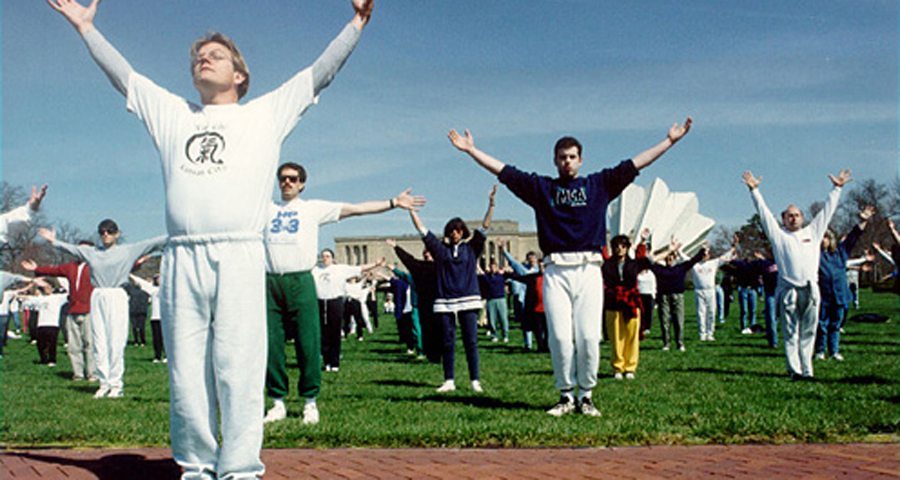Over our twenty-three years of teaching processes combining Qigong, guided meditation, and art, we have heard thousands of stories of struggle and healing. A theme that pervades both our teaching and the transformative journey is that the healer and the warrior archetypes and qualities represent a quintessential balance of yin and yang. One cannot exist without the other, and their relationship is interdependent.
As a practice in healing energy cultivation, Qigong can enhance any life’s endeavor, including the martial arts. One woman, a hard style kung fu practitioner, found Qigong’s soft and contemplative techniques for developing energy awareness to be a great aid to her kung fu training. Another woman, a Taiko drummer, found that Qigong helped her to understand how to tap the abundant sources of Qi in the earth, environment, and heaven in order to more effectively channel the Taiko rhythms though her body into the drum. One man was a black belt martial arts practitioner. Having proven himself over and over on the mat, he came to class to learn acupressure. He said he knew how to use pressure points to do harm, but now he wanted to understand how to use them to heal.
Underlying this dynamic interplay of the healer and warrior is creativity. In training for healing or martial arts, one learns forms, principles, and techniques. But practicing them is just the beginning. The proof of the effectiveness of training is in the spontaneous response to the moment that comes when the healer interacts with the client, the martial artist with the opponent. That is where creativity comes in. You can’t plan what a client will reveal to you or what move your opponent will make.
When we teach, we stress that everyone is a healer and everyone is an artist and that practices in Qi and creativity are states of awareness that infuse all of life. Sometimes students come with skepticism about Qi because it wasn’t a concept they learned growing up. Or they come in with fear of creativity because of unhealthy experiences with criticism and perfectionism. So we stress that Qi and creativity are not big mysteries. Qi is as common as your breath coming in and going out. Creativity is as normal as cultivating a friendship or cooking a meal or tending a garden. When we share maskmaking and other art processes with students, we do so in a spirit of play and exploration, where there are no mistakes—just opportunities for discovery.
We’ve led many students in making masks of their inner Warrior-Healer. Sometimes a student might embody this balance by rendering one half of the mask’s face warrior, the other healer; or by painting and embellishing healer images on the inside of the mask, warrior images on the outside; or by making two masks, one representing each archetype. But the separation is only partial. One aspect cannot help but show up in the other, like the dance of yin and yang.
